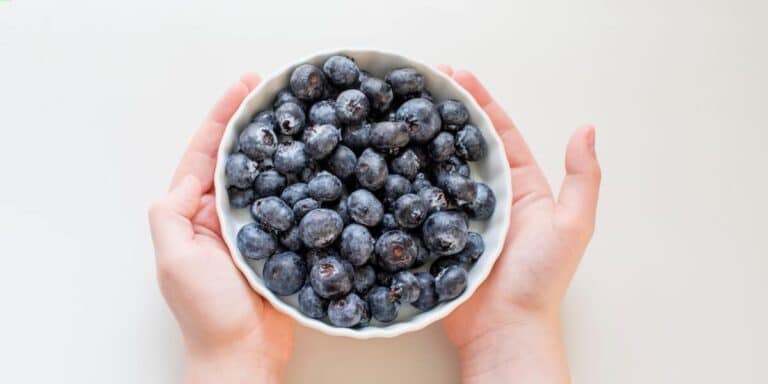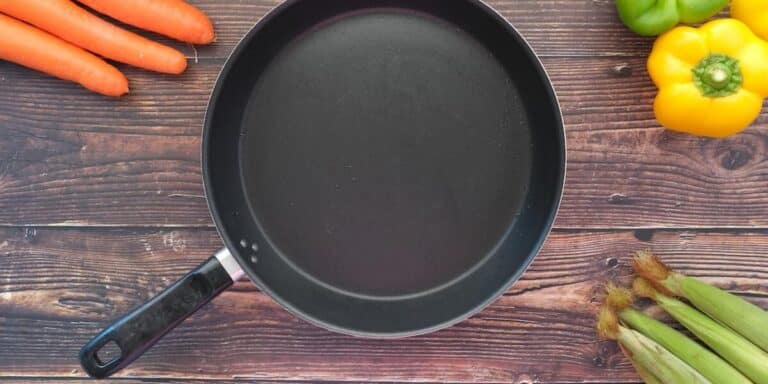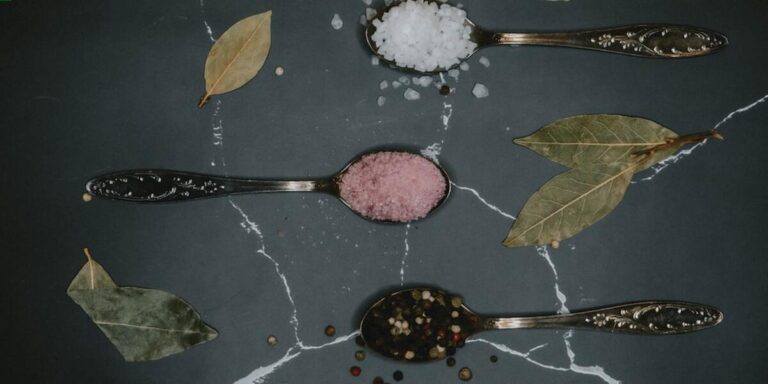Cleaning Your Baking Sheet Step by Step
You know the struggle of scrubbing away at a stubborn baking sheet, trying to remove last night’s dinner remnants. It’s a chore that’s easy to put off, but a clean baking sheet is essential for healthy cooking and preventing the buildup of bacteria. You’re probably aware that a simple wipe-down with soap and water often isn’t enough to get the job done. But what’s the best way to tackle tough stains and grime without damaging your sheet? Let’s break it down, step by step, to get your baking sheet sparkling like new.
Key Takeaways
• Start by removing large food particles using a plastic scraper, paper towel, or hands to make the cleaning process easier.
• Soak the baking sheet in warm, soapy water for at least 30 minutes to loosen grime and food residue.
• Apply a baking soda paste to the baking sheet to remove grease, grime, food residue, and discoloration.
• Scrub tough stains with a gentle cleanser and non-abrasive scrubber, then wipe away grime with a microfiber cloth.
• Dry the baking sheet thoroughly to prevent water spots and bacterial growth, and store in a dry location to maintain its condition.
Remove Large Food Particles
Start by scraping off any large food particles from your baking sheet using a plastic scraper, paper towel, or your hands (if the particles are loose and easy to remove). You’ll be surprised at how much of the grime and grunge will come off with just a simple scrape. Plus, getting rid of these big chunks of food will make the rest of the cleaning process way easier.
You don’t want to use a metal scraper or anything abrasive, though, as that could scratch up your baking sheet. Instead, stick with something soft and gentle that’ll get the job done without causing damage. And, yeah, it might be a little gross to use your hands, but sometimes that’s the most effective way to get those big pieces off.
Don’t worry if there’s still some stuck-on food at this point – you’re not trying to get everything off just yet. You’re just removing the big stuff so you can move on to the next step of cleaning. Take a quick look at your baking sheet after you’ve scraped off the large particles. It should be looking a bit better, and you should be able to see the surface more clearly now. That’s progress!
Soak the Baking Sheet
Now that you’ve removed the large food particles, it’s time to let your baking sheet soak in some warm, soapy water to loosen any remaining grime. Fill a large sink or a container with enough warm water to completely submerge the baking sheet. Add a tablespoon or two of mild dish soap to the water. You can also use a gentle cleanser specifically designed for cleaning baking sheets. Mix the soap into the water until it’s well combined.
Submerge the baking sheet in the soapy water and let it soak for at least 30 minutes. This will give the soap enough time to penetrate and loosen the tough grime and food residue. If your baking sheet is heavily soiled, you can let it soak for a few hours or even overnight. After soaking, use a non-abrasive sponge or soft cloth to wipe down the baking sheet, working from one end to the other. Don’t scrub too hard, as this can damage the sheet’s surface.
As you wipe down the baking sheet, pay particular attention to any stubborn stains or areas with heavy buildup. If you encounter any tough spots, you can let the sheet soak for a bit longer before wiping it down again. Once you’ve wiped down the entire sheet, rinse it thoroughly with warm water to remove any remaining soap residue. Your baking sheet should now be clean and free of any food residue, ready for the next step in the cleaning process.
Apply Baking Soda Paste
With your baking sheet clean and free of food residue, you’ll apply a baking soda paste to tackle any tough stains or discoloration that may still be present. This simple paste is a natural and non-abrasive way to remove stubborn marks. To make the paste, you’ll need baking soda and water. In a small bowl, mix 1 tablespoon of baking soda with 2 tablespoons of water until a smooth paste forms.
| Baking Soda Paste Benefits | What It Removes | Surface Safety |
|---|---|---|
| Natural and non-toxic | Grease and grime | Safe on aluminum, stainless steel, and non-stick surfaces |
| Gentle yet effective | Food residue and stains | Avoid using on surfaces with deep scratches or chips |
| Environmentally friendly | Discoloration and oxidation | Suitable for surfaces with a ceramic or porcelain coating |
| Inexpensive and easy to make | Burn marks and scorching | Can be used on surfaces with a silicone-based non-stick coating |
| No harsh chemicals or fumes | Tough stains and marks | Always test a small area first to warrant surface safety |
Now that you’ve mixed the paste, apply it to the stained area using a soft-bristled brush or a non-abrasive sponge. Make sure to cover the entire stained area, but don’t worry if some of the paste spreads beyond the stain. You’ll let the paste sit for about 30 minutes to allow it to penetrate and loosen the stain. After the paste has sat for the recommended time, you’ll be ready to move on to the next step in the cleaning process.
Scrub Tough Stains Away
You’ve treated your baking sheet with a baking soda paste; now it’s time to tackle those tough stains. To effectively remove them, you’ll need to choose the right cleaning tools and apply some deep cleaning methods. By doing so, you’ll be able to break down and remove even the toughest grease spots, leaving your baking sheet like new.
Choose Effective Cleaning Tools
The right cleaning tools, such as a gentle cleanser, non-abrasive scrubber, and some elbow grease, make it easier to tackle tough stains on your baking sheet. You’ll want to choose tools that are gentle on the surface yet tough on grime and food residue. Don’t worry, you’re in good hands! A soft sponge or non-abrasive scrubber to gently remove food residue
- A gentle cleanser, such as baking soda and water or a mild dish soap, to break down tough stains
- A microfiber cloth to wipe away grime and dry the surface
- A stainless steel scrubber for tougher messes, but be gentle to avoid scratching
- A pair of rubber gloves to protect your hands from harsh chemicals and hot water
Apply Deep Cleaning Methods
Now that you’ve got the right cleaning tools in hand, it’s time to tackle those tough stains on your baking sheet with some effective deep cleaning methods. You’ll start by sprinkling a generous amount of baking soda onto the stained areas. Don’t be shy – a thick layer will help break down the tough grime. Next, add a splash of water to the baking soda to form a paste. Use your non-abrasive scrubber or sponge to work the paste into the stains, scrubbing in a circular motion. Be sure to apply some elbow grease – those stains can be stubborn!
As you scrub, you’ll start to see the stains lift away. If some areas still appear tough, let the paste sit for about 30 minutes to allow it to penetrate deeper. Then, come back and scrub some more. The combination of baking soda and water can be incredibly effective at removing tough stains. By applying these deep cleaning methods, you’ll be one step closer to a sparkling clean baking sheet that’s ready for its next use.
Remove Tough Grease Spots
Mix equal parts water and white vinegar in a spray bottle to tackle those tough grease spots that have been clinging to your baking sheet. You’re going to use this solution to loosen the grime and food residue that’s been stuck on there. Don’t worry if the spots seem stubborn – this solution is up to the task.
To remove those tough grease spots, you’ll want to:
Spray the solution onto the baking sheet, making sure to cover the entire area evenly
**Let it sit for** about 15-20 minutes to give it time to penetrate and loosen the grime
- Use a non-abrasive scrubber or soft-bristled brush to gently scrub away at the grease spots
- Rinse the baking sheet thoroughly with warm water to remove any remaining solution and debris
- Dry it completely with a towel to prevent water spots from forming
Rinse and Dry Thoroughly
Rinse your baking sheet thoroughly with warm water to remove any remaining food residue and cleaning solution. You’ve made it through the toughest part of cleaning your baking sheet – removing that stubborn grime. Now, it’s time to give your baking sheet a rejuvenating rinse to make it sparkle like new.
As you rinse, make sure to remove any lingering soap residue. You don’t want any leftover cleaning solution affecting the taste of your next batch of baked goods. Here’s what happens when you thoroughly rinse your baking sheet:
| Cleaning Result | Benefits | Your Feeling |
|---|---|---|
| Sparkling Clean Surface | Food cooks evenly and tastes great | Confidence |
| No Residue Left Behind | Healthy cooking and eating | Peace of Mind |
| Fresh and Sanitized | Reduced risk of foodborne illness | Relief |
| Environmentally Friendly | Gentle on the environment | Guilt-free |
| Easy Future Cleaning | Less scrubbing required next time | Happiness |
Now that you’ve rinsed away any remaining grime, dry your baking sheet thoroughly with a towel to prevent water spots. You’ve put in the effort to clean your baking sheet, so make sure to take the extra step to dry it properly. A dry baking sheet is essential for preventing bacterial growth and keeping your baking sheet in top condition.
Maintain Your Baking Sheet
Maintaining your baking sheet is a matter of developing a few simple habits, such as regularly cleaning and storing it properly, to keep it in top condition. You’ve already learned how to clean your baking sheet, now it’s time to maintain it. By following these simple tips, you’ll be able to keep your baking sheet in great shape and guarantee it continues to perform well over time.
- Avoid using abrasive cleaners or scourers, as they can scratch the surface of your baking sheet. Instead, stick to gentle cleaners and soft sponges.
- Dry your baking sheet thoroughly after each use to prevent water spots from forming.
- Store your baking sheet properly by placing it in a dry location, such as a hook or hanging rack. Avoid storing it in a humid environment or stacking it on top of other baking sheets.
- Don’t put your baking sheet in the dishwasher, as the high heat and harsh detergents can damage the finish.
- Re-season your baking sheet regularly if you have a non-stick or cast-iron baking sheet. This will help maintain the non-stick coating and prevent rust from forming.
Frequently Asked Questions
Can I Use a Scouring Pad to Clean a Non-Stick Baking Sheet?
You’re a brave knight, ready to tackle the grime on your non-stick baking sheet. Don’t charge into battle with a scouring pad, though – it’ll scratch the surface. Instead, try a gentle cleanser and a soft sponge.
How Do I Remove Rust From a Metal Baking Sheet?
You’ll want to tackle that rust quickly. Mix equal parts water and white vinegar in the baking sheet, then add a tablespoon of baking soda. Let it sit for a few hours before scrubbing and rinsing.
Are Baking Sheets Safe to Clean in a Dishwasher?
As you wrestle with the woes of washing, you wonder: are baking sheets safe to clean in a dishwasher? You’ll be relieved to know that most modern baking sheets can withstand the dishwasher’s mighty heat and harsh cycles.
Can I Use Bleach to Clean and Sanitize a Baking Sheet?
You shouldn’t use bleach to clean and sanitize a baking sheet, as it can react with aluminum or other metals, causing damage or discoloration. Instead, you can opt for gentle cleansers or natural sanitizing methods.
How Often Should I Deep Clean My Baking Sheets?
You should deep clean your baking sheets every 1-3 months, depending on how often you use them. If you bake frequently, you’ll need to deep clean them more often to prevent grime buildup.





